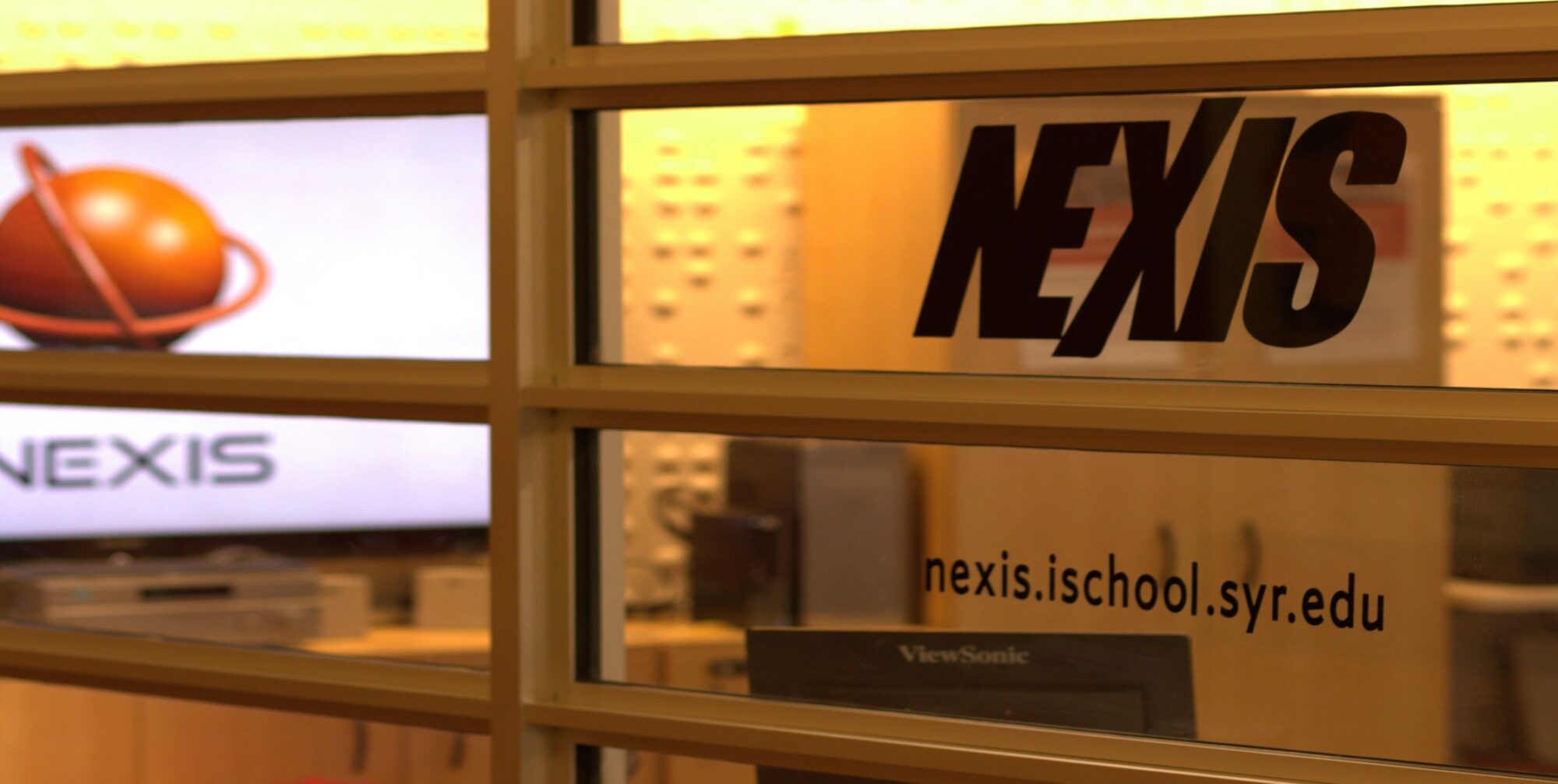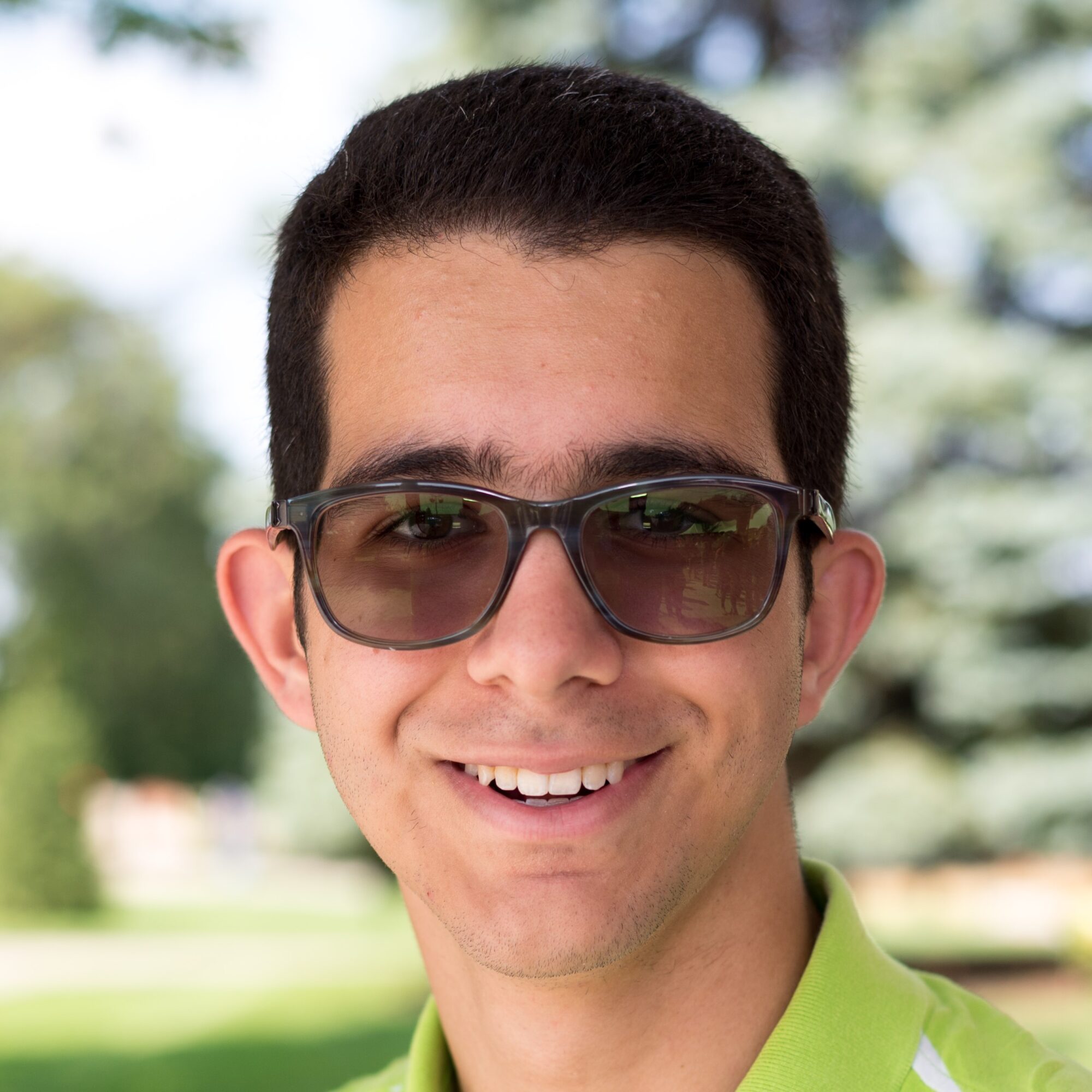
On any given day of the week, a lab room in Hinds Hall brings to life technological dreams and ideas of innovation. The NEXIS lab, a technological and innovation makerspace in the School of Information Studies, provides a space for savvy students to prototype their many inventions and ideas. With projects in fields from virtual reality to cybersecurity to medical tech, NEXIS gives students the place and resources to dream of a better world through technology.
The leader behind this network of inventors and idea production? Javier Canela Veiga ’22, studying information management in the School of Information Studies, serves as the current director of the NEXIS lab after being a dedicated researcher in the lab his previous three years of undergraduate study.

Veiga joined the lab his freshman year, starting out in the SMART lab project, which developed new processes for lab and student support. The first project that he plunged himself into was a density prototype which kept constant track of how many people were in the lab at any given time, giving them valuable density data. From there he involved himself with a variety of projects over the course of the coming years, all fueling his love for ideation. “I’ve always had passion for technology and innovation, and passion to research,” spoke Veiga in reference to his love for the work of NEXIS lab.
NEXIS’ greatest barrier over the past year, according to Veiga, has been the difficulty of working through COVID. As a collaborative working space, NEXIS relies heavily on teams of students working together to shape their ideas, test their theories, and continually bounce thoughts off each other. Without full ownership of a physical space, the students of NEXIS struggled to create in the same way that they always had. “It’s a space that heavily grows based on research, and with COVID we couldn’t really do that as we could have only four researchers in the lab. We couldn’t get hands on collaboration and couldn’t access the technology of the lab,” said Veiga about the difficulty of working through a pandemic lifestyle.
Even today, like many campuses and workspaces across the world, NEXIS is still adapting to a post-pandemic world. “In transitioning back to in person there has been a disconnect,” said Veiga. Many underclassmen members are unused to navigating an in-person NEXIS and the leadership transitional process has been slower due to changed procedures and continual adjustment. For Veiga, the key to successfully overcoming these challenges is the quality that NEXIS is built on: teamwork and community. “That’s when collaboration comes in,” said Veiga of his desire to restore NEXIS’ shared productive space.
The Blackstone LaunchPad has been thrilled to work with teams of student inventors from NEXIS over the past few years. Previous NEXIS leader Shawn Gaetano went on to win prizes in campus competitions and in the Global Student Entrepreneurship Award and become the recipient of a prestigious Blackstone LaunchPad Fellowship.
While NEXIS provides the space, equipment, and skilled team members needed to fashion technology and create complex solutions to modern problems, the LaunchPad provides the necessary funding and mentorship to push those technologies to market. The collaborative spaces and brilliant team members in both NEXIS and the LaunchPad are the powers that can create impactful innovation.
For Veiga, whose lifelong passion has always been innovation through technological development, NEXIS is the Syracuse space that provides that to himself and students. As this year’s director, he hopes to cultivate that space for technological dreams to turn into capable innovations. The scientifically complex and societally impactful technologies that come out of NEXIS only reaffirms the talent and passion at heart in the Syracuse community and the power of harnessing that in collaborative workspaces.
Story by Claire Howard ’23, Global Fellow.